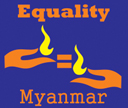Torture Report
Executive Summary
Myanmar military has a long history of using torture to stop and break down the peaceful protests and target the innocent civilians in the areas where armed clashes broke out. Torture in Myanmar can be divided into two types – torture by security forces especially in interrogation and prisons and torture of innocent civilians in areas of clashes by regime forces. Torture victims can also be divided into two main groups. The two are political society and innocent civilians in the areas where the armed resistance broke out.
The Myanmar military’s torture has increased since the 1988 uprising. During the so-called democratization process under quasi-civilian governments which began in 2011, the Myanmar military’s atrocities including torture and ill-treatment of innocent civilians continued in ethnic minority areas. Yet, most of the documented evidence of the Myanmar military’s atrocities did not garner adequate attention from the public and support from the international community to hold those responsible for the atrocities accountable. However, the Myanmar military proved its brutality and evilness by its blatant violence against people peacefully resisting the coup attempted on February 1, 2021.
Since the coup attempt, the military junta has used torture as a means not only to extract information from the accused but also punish and retaliate them for their pro-democracy activities and to instill fear among the people. The act of torture by the Myanmar military’s security forces is based on arbitrary grounds while the patterns of torture are proven systematic and widespread. The junta has increasingly arrested civilian protesters, activists, members of CDM, politicians, members of NLD party, people with ties with NLD party and people supporting the National Unity Government (NUG), Committee Representing Pyidaungsu Hluttaw (CRPH), National Unity Consultative Council (NUCC) and ethnic revolutionary organization (EROs).


